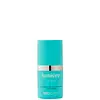What's inside
What's inside
 Key Ingredients
Key Ingredients

 Benefits
Benefits

 Concerns
Concerns

 Ingredients Side-by-side
Ingredients Side-by-side

Water
Skin ConditioningCaprylic/Capric Triglyceride
MaskingC12-20 Acid PEG-8 Ester
EmulsifyingGlycerin
HumectantButylene Glycol
HumectantCetyl Alcohol
EmollientPEG-8
HumectantBisabolol
MaskingCaffeine
Skin ConditioningTetrahexyldecyl Ascorbate
AntioxidantFagus Sylvatica Bud Extract
TonicLecithin
EmollientCutaneous Lysate
MoisturisingTetrapeptide-21
Skin ConditioningSodium Hyaluronate
HumectantGlycyrrhetinic Acid
Skin ConditioningTocopherol
AntioxidantCitric Acid
BufferingCapryloyl Carnosine
Skin ConditioningAscorbyl Palmitate
AntioxidantTocotrienols
Skin ConditioningElaeis Guineensis Oil
EmollientPalmitoyl Tripeptide-1 Acetate
Skin ConditioningAscorbic Acid
AntioxidantBenzoic Acid
MaskingSqualene
EmollientPhytosterols
Skin ConditioningSodium Citrate
BufferingPotassium Cetyl Phosphate
EmulsifyingPotassium Sorbate
PreservativeCaprylyl Glycol
EmollientCarbomer
Emulsion StabilisingHexylene Glycol
EmulsifyingSaccharide Isomerate
HumectantSodium Polyacrylate
AbsorbentSodium Hydroxide
BufferingDisodium EDTA
Phenoxyethanol
PreservativeBenzyl Alcohol
PerfumingWater, Caprylic/Capric Triglyceride, C12-20 Acid PEG-8 Ester, Glycerin, Butylene Glycol, Cetyl Alcohol, PEG-8, Bisabolol, Caffeine, Tetrahexyldecyl Ascorbate, Fagus Sylvatica Bud Extract, Lecithin, Cutaneous Lysate, Tetrapeptide-21, Sodium Hyaluronate, Glycyrrhetinic Acid, Tocopherol, Citric Acid, Capryloyl Carnosine, Ascorbyl Palmitate, Tocotrienols, Elaeis Guineensis Oil, Palmitoyl Tripeptide-1 Acetate, Ascorbic Acid, Benzoic Acid, Squalene, Phytosterols, Sodium Citrate, Potassium Cetyl Phosphate, Potassium Sorbate, Caprylyl Glycol, Carbomer, Hexylene Glycol, Saccharide Isomerate, Sodium Polyacrylate, Sodium Hydroxide, Disodium EDTA, Phenoxyethanol, Benzyl Alcohol
 Reviews
Reviews

Ingredients Explained
These ingredients are found in both products.
Ingredients higher up in an ingredient list are typically present in a larger amount.
Butylene Glycol (or BG) is used within cosmetic products for a few different reasons:
Overall, Butylene Glycol is a safe and well-rounded ingredient that works well with other ingredients.
Though this ingredient works well with most skin types, some people with sensitive skin may experience a reaction such as allergic rashes, closed comedones, or itchiness.
Learn more about Butylene GlycolCarbomer is a polymer of acrylic acid. Its main role is to create a gel consistency.
A high amount of carbomer can cause pilling or balling up of products. Don't worry, most products contain 1% or less of carbomer.
Glycerin is already naturally found in your skin. It helps moisturize and protect your skin.
A study from 2016 found glycerin to be more effective as a humectant than AHAs and hyaluronic acid.
As a humectant, it helps the skin stay hydrated by pulling moisture to your skin. The low molecular weight of glycerin allows it to pull moisture into the deeper layers of your skin.
Hydrated skin improves your skin barrier; Your skin barrier helps protect against irritants and bacteria.
Glycerin has also been found to have antimicrobial and antiviral properties. Due to these properties, glycerin is often used in wound and burn treatments.
In cosmetics, glycerin is usually derived from plants such as soybean or palm. However, it can also be sourced from animals, such as tallow or animal fat.
This ingredient is organic, colorless, odorless, and non-toxic.
Glycerin is the name for this ingredient in American English. British English uses Glycerol/Glycerine.
Learn more about GlycerinPhenoxyethanol is a preservative that has germicide, antimicrobial, and aromatic properties. Studies show that phenoxyethanol can prevent microbial growth. By itself, it has a scent that is similar to that of a rose.
It's often used in formulations along with Caprylyl Glycol to preserve the shelf life of products.
Sodium Citrate is the sodium salts of citric acid. In skincare, it is used to alter pH levels and acts as a preservative.
Its main functions are to maintain the pH of a product and neutralize metal ions.
The acidity of our skin is maintained by our glands and skin biome; normal pH level of skin is slightly acidic (~4.75-5.5).
Being slightly acidic allows our skin to create an "acid mantle". This acid mantle is a thin barrier that protects our skin from bacteria and contaminants.
Learn more about Sodium CitrateSodium Hyaluronate is hyaluronic acid's salt form. It is commonly derived from the sodium salt of hyaluronic acid.
Like hyaluronic acid, it is great at holding water and acts as a humectant. This makes it a great skin hydrating ingredient.
Sodium Hyaluronate is naturally occurring in our bodies and is mostly found in eye fluid and joints.
These are some other common types of Hyaluronic Acid:
Learn more about Sodium HyaluronateWater. It's the most common cosmetic ingredient of all. You'll usually see it at the top of ingredient lists, meaning that it makes up the largest part of the product.
So why is it so popular? Water most often acts as a solvent - this means that it helps dissolve other ingredients into the formulation.
You'll also recognize water as that liquid we all need to stay alive. If you see this, drink a glass of water. Stay hydrated!
Learn more about Water